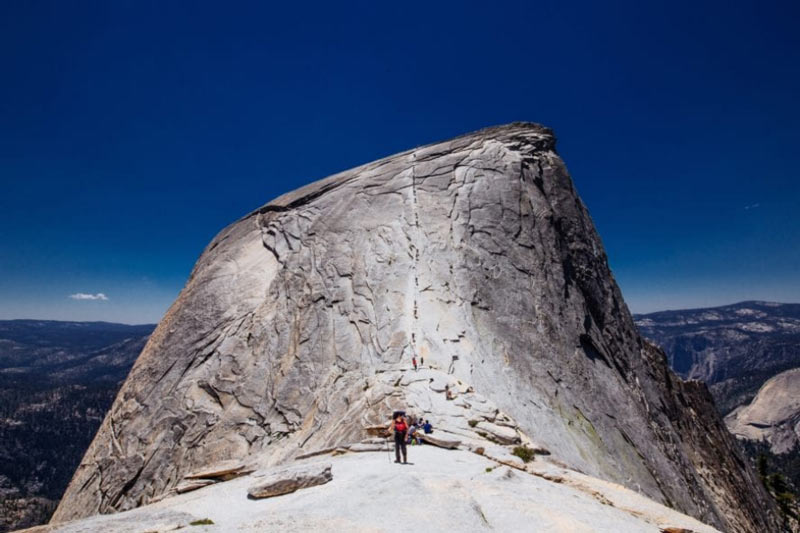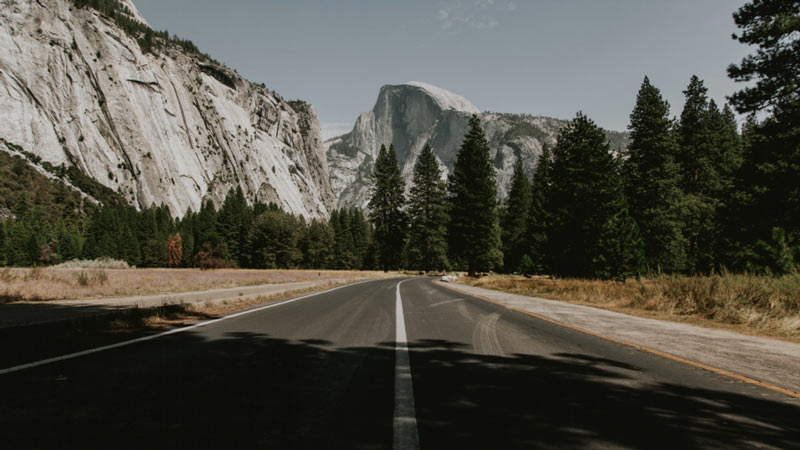For anyone looking to experience the breathtaking beauty of Yosemite National Park, hiking is undoubtedly one of the best ways to take it all in. You'll find something unique and memorable for any skill level, from winding trails that lead through valleys and meadows filled with wildflowers to rugged paths up granite cliffs.
With stunning views of waterfalls, meadows, forests, lakes, and impressive rock formations tucked away throughout the park's 1,120 square miles, much natural beauty awaits exploring. Whether tackling a multi-day backpacking trip or staying for a weekend day hike in Yosemite Valley, this guide offers something special for everyone.
Yosemite National Park and Things to know before you go

Yosemite National Park is in California's Sierra Nevada mountains and straddles four counties. It features over 1,100 square miles of spectacular granite cliffs, soaring waterfalls, lush meadows, ancient giant sequoias, and abundant wildlife. With its high elevation (averaging 4,000 feet above sea level), Yosemite can have unpredictable weather changes year-round.
The park's peak months are May through September, when the trails are driest and easiest to hike. However, these months can also be the most crowded for visitors,, so be sure to plan before you go. You'll need a vehicle pass ($35/per vehicle) or an annual park pass to enter any part of Yosemite National Park.
Hiking in Yosemite Valley

Yosemite Valley is the most memorable and visited area in Yosemite National Park. Visitors can enjoy spectacular views of Half Dome, El Capitan, Sentinel Rock, Bridalveil Fall, Yosemite Falls,, and more. There are several trails to choose from here for all skill levels.
The Mist Trail is among the most popular hikes due to its breathtaking waterfall views and moderate difficulty level (3-4 hours round trip). Upper Yosemite Falls Trail is also a must-do hike with an incredible view of Yosemite Falls above; it's a 4-hour round trip and is considered moderately strenuous.
For a longer day hike, you can try the Four Mile Trail, which takes you to Glacier Point; this trail has stunning views of the valley and is rated as strenuous.
Hiking in Tuolumne Meadows
Tuolumne Meadows is a high-elevation subalpine meadow in the northeastern Yosemite National Park. It's known for its spectacular mountain views and sprawling wildflower fields that bloom during peak summer months.
Here, you'll find several trails ranging from easy to strenuous hikes. Try out Cathedral Lakes Trail (3 miles round trip) for an easy hike with stunning lake views. The Lembert Dome Trail is slightly more difficult but offers breathtaking panoramic views of the park (4 miles round trip).
If you're looking for a more strenuous hike, Gaylor Lakes Trail is a great option with incredible lake views and granite peaks (7 miles round trip).
Hiking in Yosemite's Backcountry
For the more adventurous, several multi-day backpacking trips are available throughout Yosemite National Park. The best way to explore these trails is by obtaining a wilderness permit (required for any overnight stay in the park) and familiarizing yourself with Leave No Trace principles.
Two popular multi-day hikes include John Muir Trail and Half Dome Trail. While both are strenuous trips, they offer unforgettable experiences that cannot be found anywhere else.
Taking a Day Trip to Glacier Point
For those looking for an incredible day trip from Yosemite Valley, Glacier Point is the place to go. Located approximately 30 miles south of the valley, Glacier Point offers breathtaking views of Half Dome and other spectacular granite peaks.
The best way to get there is by car (2-3 hours), but you can also take a shuttle bus that departs from Yosemite Valley in the summer months (April – October). No matter where you decide to explore or what type of hike you plan on taking, Yosemite National Park has something for everyone.
From breathtaking waterfalls to rugged backpacking trails, it's truly one of the most unique and beautiful places on earth. So come prepared with plenty of snacks, your camera, and a sense of adventure to make the most of your visit.
Difficult Hikes in Yosemite
The Wilderness of Rocks Trail is an advanced hike with a continuous climb up to 8,200 feet. This strenuous 10-mile round-trip trail takes you through an array of granite formations and sweeping views of the park.
Clouds Rest Trail is another difficult but rewarding hike in Yosemite National Park. It's considered one of the most beautiful hikes in California, with jaw-dropping vistas along its 9-mile route. Both trails are recommended for experienced hikers as they require technical climbing skills and off-trail navigation.
Upper Yosemite Falls Hike
The Upper Yosemite Falls Trail is a moderately strenuous hike to one of the tallest waterfalls in North America. This 4-mile round-trip trail includes incredible views of Yosemite Valley, Half Dom,e and more.
It's best hiked during summer as it can be icy and dangerous in winter and spring. Bring plenty of snacks and water, as the hike can take 3-5 hours, depending on how often you stop to admire the views.
No matter what type of hike you decide to take, Yosemite National Park will provide unique and breathtaking scenery, wildlife, and experiences.
Tips &'' Resources for Planning Your Visit to Yosemite National Park
- Start planning as early as possible to ensure you can get a wilderness permit and secure lodging.
- Bring plenty of water, snacks, and sun protection on all hikes – even short ones.
- Be mindful of wildlife and adhere to the Leave No Trace guidelines while hiking in Yosemite National Park.
- To get around the park, consider renting a car or taking one of the many shuttles that depart from Yosemite Valley in the summer months (April – October).
- Check out the official Yosemite National Park website for up-to-date info on trail closures, events, and safety tips.
- Pack a pair of binoculars – you'll be surprised at how many birds, deer, bears, and other animals can spot in the park.
- Download the Yosemite National Park app for helpful maps and trail information before your visit.
- Review the weather forecast before heading out to ensure you've dressed appropriately for the conditions.
Exploring Yosemite National Park is an amazing experience that everyone should have. With its incredible outdoor adventures and breathtaking scenery, there is truly something here for everyone to enjoy. So make sure to plan and bring all the necessary supplies to make your visit to this majestic park one that will never be forgotten.
FAQS
What is the best month to hike Yosemite?
The best time to hike Yosemite is usually during the spring and fall months. Weather-wise, these are the ideal times, as temperatures tend to be milder (perfect for a long day of hiking), and there tends to be less snowfall in these months.
How many days is ideal in Yosemite?
A 3-day trip to Yosemite National Park is the ideal time to experience the park's main attractions. During this time, you can explore Yosemite Valley, Tuolumne Meadows, popular day hikes, and take a day trip to Glacier Point.
Do you need a car in Yosemite?
No, you do not need a car to explore Yosemite National Park. A shuttle bus service runs in the summer months (April – October) from Yosemite Valley to other parts of the park, like Glacier Point and Tuolumne Meadows. This allows visitors to explore different areas without needing their cars.
Conclusion
Visiting Yosemite National Park is a must for anyone looking to explore the outdoors and take in some breathtaking views. No matter what kind of hiker you are, an adventure awaits you to meet your hiking needs. Whether a stroll or a challenging All-Day hike, Yosemite offers something amazing.
With its vast network of trails, majestic forests, and stunning waterfalls, this beautiful park offers miles upon miles of incredible outdoor sights and experiences. Take advantage of these activities while getting in shape and appreciating nature.
Make sure to do your research ahead of time regarding closures, permit information, trail difficulty levels, and appropriate clothing before starting your trek.



